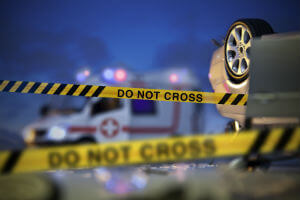 Accident claims involving three or more cars can be complex because it may be difficult to determine who caused each collision and there may be multiple plaintiffs and insurance companies to deal with.
Accident claims involving three or more cars can be complex because it may be difficult to determine who caused each collision and there may be multiple plaintiffs and insurance companies to deal with.
If you were involved in multi-vehicle accident, we encourage you to call one of our experienced Savannah car accident attorneys to find out if we may be able to help pursue compensation. We welcome the opportunity to speak with you, and our initial consultations are completely free.
Kinds of Accidents That May Involve Multiple Vehicles
Multi-vehicle pileups, also known as chain reaction accidents, frequently occur at busy intersections or on major highways. Unfortunately, they often result in serious injuries and fatalities. Here are some of the common types of accidents that also involve multiple vehicles:
- T-bone accidents – These are also known as side-impact collisions and they are often caused by one driver speeding through a red light and colliding with another car that had the right of way. Cars following either of these vehicles may not be able to brake in time, causing a multi-vehicle pileup.
- Rear-end accident – A driver may plow into the back of another vehicle, causing that car to crash into another.
- Head-on accidents – This type of accident often causes catastrophic injuries or fatalities. One common way a head-on collision occurs is when a vehicle suddenly veers into oncoming traffic. The high speed and heavy traffic on a busy highway may make it difficult for other vehicles to avoid a crash.
Factors in Multi-Vehicle Accidents
When investigating a multi-vehicle crash scene to determine how it may have occurred and which party, or parties, may share liability; police, insurance companies and attorneys may consider the following factors:
- Crash scene evidence – Experienced investigators on the scene gather evidence while it is still fresh in an attempt to build an accurate picture of how the accident may have happened. This may include inspecting fresh tire marks in the road, the final position and damage to each vehicle, talking to the drivers – when possible – and speaking with any witnesses.
- Driver error or negligence – Attorneys and others investigating the crash may try to determine if any drivers drove into oncoming traffic or were texting and driving, speeding, or driving while impaired. Attorneys may review cellphone records, accident reconstruction and traffic camera footage, among other forms of evidence.
- Road conditions – Potholes, road construction, objects or animals on the road may have caused a driver to lose control and plow into another vehicle, causing a chain reaction.
- Mechanical failures – Tire blowouts and failed brakes are common vehicle problems that can cause a driver to lose control of his or her vehicle and result in an accident.
- Inclement weather– Fog, heavy rain, snow or other bad weather conditions may contribute to a chain reaction accident.
- Traffic violations – Disobeying the law by speeding, running a red light, texting and driving, or driving under the influence may cause a multi-vehicle accident in an intersection.
How Comparative Negligence Works in Georgia
Georgia is a modified comparative negligence state. This means fault can be shared between two or more drivers based on a percentage assigned to each one. For example, if a car leading a line of vehicles stops suddenly, for no reason, causing a chain reaction pileup, the driver at the front of the line could be held partially responsible for the damages caused.
Were You Injured in a Multi-Vehicle Crash? Call Roden Law
If you have been injured in a multi-vehicle crash in Georgia, we encourage you to contact one of our experienced attorneys.
